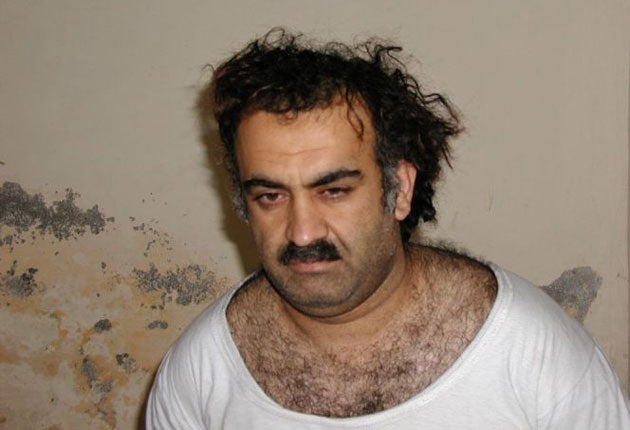Staying one step ahead in the war on terror
David Usborne on how technology helped Bin Laden run al-Qa'ida

When investigators learned that Osama bin Laden had been sending emails not by clicking "send" but by assigning his aides to take them to a web cafe on a memory stick, the first reaction of the tech-savvy observer might have been to marvel at how an old-fashioned approach had stymied the authorities.
Compared to earlier generations of terrorists, though, Bin Laden and his cohorts have benefited from an extraordinary technological advance that renders any search for their actions akin to that for a needle in a haystack. The al-Qa'ida leader's simple evasion of his enemies' attentions is only the latest chapter in an online revolution that has transformed terrorism, and left modern governments with a more complex investigative problem than any of their predecessors have faced.
For those who plot terror, on the other hand, the world of information technology means a dilemma. Digital messages can be sent to the most far-flung corners of their networks in an instant. A message posted to a website by al-Qa'ida over a week ago lamenting the death of Osama bin Laden, for example, was the best and quickest way its remaining leadership had to galvanise followers in multiple countries to rise up and fight back.
But what was true in the past remains so today: every time you send out a communication, whether scribbled in code on a tightly folded wad of paper or in an email, someone may be trying to trace it back to you.
How to capture what is said over phone lines, via Skype or in emails is something western governments spend untold hours and sums of public money trying to figure out. It is a peril that Bin Laden understood well. Not only did he have no internet connection at the Pakistani lair where he was killed, he didn't even dare have a phone line. He still found a way to keep communicating with his troops via email and stay in charge of his network's operations.
How he managed it, though, did not exactly depend on a sizzling grasp of the latest hardware and software. His solution was so basic, that probably folk at the National Security Agency never thought about it despite billions spent on intelligence-gathering.
That the lords of Jihad are specialists of the Koran not of computers should surprise no one, however. Detailed reporting recently by the New Yorker magazine into the pre-incarceration life of Khalid Sheikh Mohammed, the accused mastermind of the 9/11, revealed that in the weeks prior to the attacks – almost 10 years ago now– he used a free email account to stay in touch with his various co-conspirators. What did the terrorist genius choose for his password? Hotmail.
According to top US intelligence sources speaking anonymously to the Associated Press, Bin Laden was a diligent sender of emails. Computer blogs were filled yesterday with suggestions from enthusiasts and experts on how he might have stayed in email contact with other operatives with minimal risk of detection. You can be as devious as you like but if you have no internet connection none of it will help very much.
He did it via a system of old-fashioned legwork and patience. Bin Laden would write the emails in draft form and download them on a digital storage device known as a thumb drive that he would then give to a trusted courier.
The latter would then carry it out of the compound to a far-away internet café. There he would plug the device in, retrieve his master's latest missives and send them off. He would retrieve responses the same way and use the same thumb drives to take them back to Bin Laden. "Does al-Qa'ida really not have an IT department?" a writer for Wired magazine asked mockingly on a blog yesterday. But the solution to his communications problems was simple and, amazingly it worked just fine for almost six years.
Two things were not so clever: it was the absence of a phone and internet connections that first made American spies suspicious about the compound.
More importantly, when the elite Navy Seals went in they found about 100 of those thumb drivers lying around the compound, filled with Bin Laden's communications, the responses to them and, an array of email addresses of those people that he was in touch with.
Porn cache found at Bin Laden compound
Reuters
*A stash of pornography was found in the hideout of Osama bin Laden by US commandos, US officials said yesterday. The pornography recovered at Bin Laden's compound in Abbottabad, consists of modern, electronically recorded video and is fairly extensive, the officials claimed.
It was not clear precisely where in the compound the pornography was discovered and the officials said they did not know if Bin Laden himself had acquired or viewed the materials.
Reports from Abbottabad have said that Bin Laden's compound was cut off from the internet or other communications networks. It is unclear how compound residents would have acquired the pornography. But a video released by the US administration confiscated from the compound showed Bin Laden watching pictures of himself on a TV screen, indicating the compound was equipped with video playback equipment.
Subscribe to Independent Premium to bookmark this article
Want to bookmark your favourite articles and stories to read or reference later? Start your Independent Premium subscription today.

Join our commenting forum
Join thought-provoking conversations, follow other Independent readers and see their replies